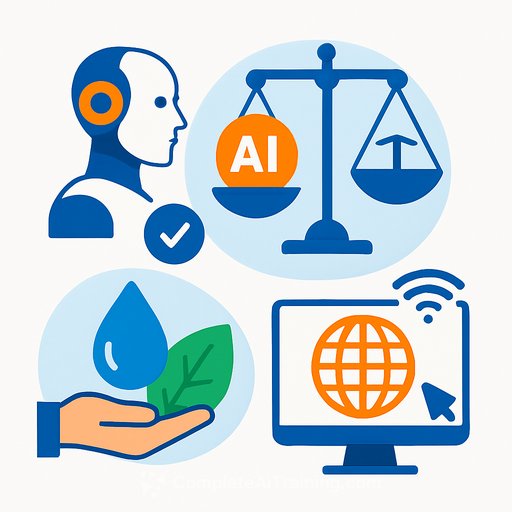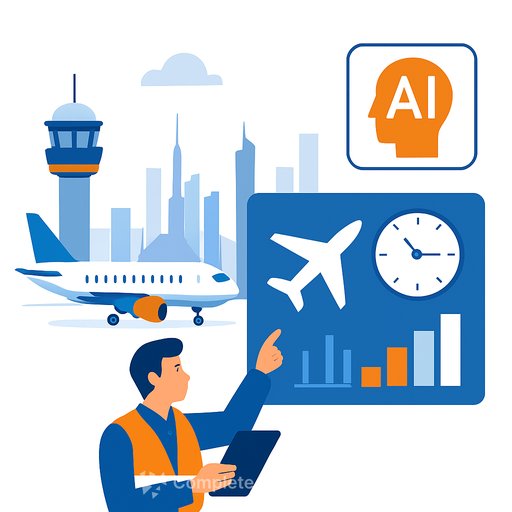NTT Data Puts AI Ethics, Water and Accessibility at the Core of Its New Sustainability Strategy
NTT Data has updated its sustainability materiality framework, adding 13 priorities across three pillars: Planet Positive, Prosperity Positive and People Positive. The move brings water management, responsible technology and AI ethics, and digital accessibility to the front of the agenda.
This refresh reflects the company's larger operational footprint after integrating more tightly with NTT's global infrastructure and the sharp rise in AI-driven workloads. For executives, the message is clear: technology growth now comes with hard commitments on environmental impact, digital trust and inclusion.
What "materiality" means in practice
Materiality is about prioritising the ESG issues that have the biggest impact on the business and its stakeholders. Done well, it focuses strategy, investment and reporting on the topics that move financial outcomes and real-world impact. NTT Data's previous framework launched in 2022 under "Realising a Sustainable Future." The update signals a push from principles to execution across operations, supply chains and product design.
The three pillars and what's new
- Planet Positive: Climate change, circularity and water management. Water now stands alongside energy as a critical operational resource, especially for data centre cooling.
- Prosperity Positive: Innovation through technology, responsible technology and AI ethics, sustainable supply chain management, digital safety and reliability, and secure and sustainable-by-design services.
- People Positive: Diversity and inclusion, health and safety, human rights and digital accessibility.
Why this matters now
Data centres already account for a meaningful share of global electricity use, with demand set to climb as AI workloads scale. Water use for cooling adds another pressure point in certain regions. For context, see the International Energy Agency's view on data centre energy trends: IEA: Data centres and networks.
At the same time, governments are moving on AI risk, bias, security and transparency. Expect procurement requirements, audits and disclosures to tighten. A practical reference for building internal controls is the NIST AI Risk Management Framework.
AI ethics moves from slideware to system design
NTT Data's emphasis on responsible technology and AI ethics suggests a shift from policy to engineering. That means model and data governance, pre-deployment testing, human oversight and post-deployment monitoring embedded in delivery. It also points to "secure and sustainable-by-design" standards becoming gates in product lifecycles and client engagements.
Executives should expect these controls to influence go-to-market timelines, vendor selection and cost structures. The upside: fewer incidents, stronger customer trust and better regulatory posture.
What good execution looks like
- Clear targets: PUE and WUE thresholds by site, % renewable electricity by region, water-stress guardrails for new capacity, accessibility compliance rates (e.g., WCAG 2.2).
- Accountability: Executive ownership for each material topic, linked incentives, quarterly scorecards and external assurance for high-risk metrics.
- AI governance in delivery: Model cards, data lineage, bias and security testing, incident logging and human-in-the-loop for sensitive use cases.
- Supplier commitments: ESG clauses, traceable emissions data (Scope 3), conflict minerals/human rights due diligence and remediation plans.
- Design standards: Secure-by-design checklists, privacy-by-default, energy-efficient architectures and accessibility reviews at each release gate.
- Data centre strategy: Location decisions based on grid intensity and water stress, heat reuse where viable, and continuous optimisation of cooling.
KPIs to watch
- PUE (power usage effectiveness) and WUE (water usage effectiveness) by site
- Scope 2 and Scope 3 emissions intensity per compute unit or revenue
- % workloads placed in low-carbon regions; % renewable electricity contracted
- AI model risk ratings; number of AI incidents and time-to-remediate
- % products meeting secure- and sustainable-by-design standards at launch
- Accessibility compliance: % apps/services meeting target WCAG level
- Supplier ESG coverage: % tier-1 spend with audited emissions and human rights due diligence
Risks of standing still
- Regulatory exposure: Fines, delays, or forced product changes if controls are weak.
- Cost drag: Inefficient cooling and grid choices inflate energy and water bills.
- Revenue risk: Enterprise buyers increasingly require proof of responsible AI and sustainability in RFPs.
- Talent risk: Engineers prefer employers with credible ethics, accessibility and climate action.
Questions to ask your team this week
- Do we have a single owner for each of the 13 material topics with measurable targets?
- Where are our PUE and WUE outliers, and what is the 12-month plan to fix them?
- Which products will adopt secure- and sustainable-by-design gates this quarter?
- What AI use cases require human oversight today, and who signs off?
- How are we integrating accessibility into product roadmaps and QA, not just policy?
- What % of tier-1 suppliers provide verifiable emissions and human rights data?
First 180 days: a practical rollout
- Days 0-30: Confirm owners and targets per topic. Baseline PUE/WUE, renewable electricity by site, and AI model inventory. Publish a governance RACI.
- Days 31-90: Implement AI model cards, incident logging and red-teaming for high-risk systems. Add accessibility gates to product QA. Update supplier contracts with ESG requirements.
- Days 91-180: Execute data centre efficiency upgrades, shift workloads to cleaner regions where feasible, and pilot heat reuse. Launch quarterly public metrics with limited assurance.
The bottom line
NTT Data's updated materiality framework acknowledges the real impacts of AI scale and infrastructure growth. The winners will turn these priorities into system-level standards, clear metrics and credible reporting. If you manage strategy, operations or technology, treat this as a blueprint: set targets, bake controls into delivery and prove progress with data.
If your teams need focused upskilling on AI governance, risk and product delivery, explore curated pathways by role here: Complete AI Training: Courses by Job.
Your membership also unlocks:











